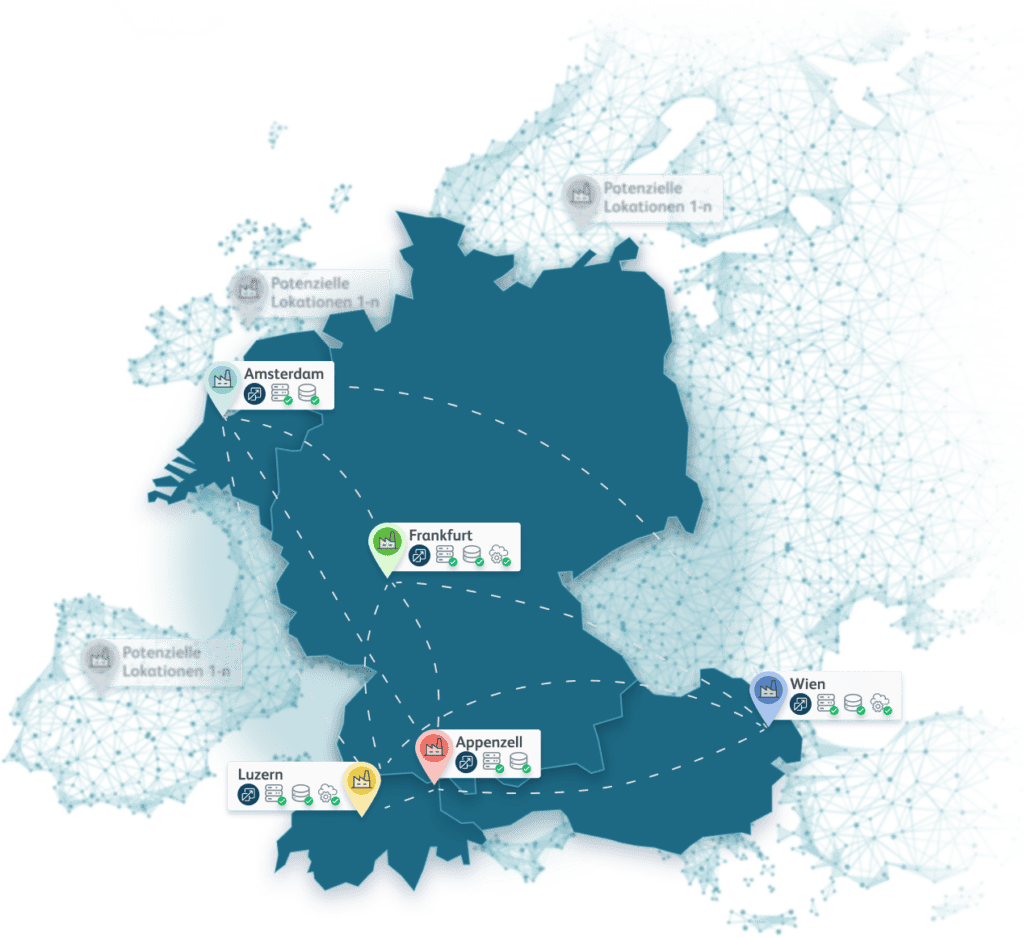
Navigating the cloud landscape:
Five Tips: how to find the right Multi Cloud Strategy
The cloud computing landscape has evolved rapidly in recent years. Many businesses are no longer simply in one cloud; instead, they operate within a complex multi-cloud environment. Such an environment uses multiple cloud structures, for example public and private clouds, so that companies can tailor the cloud solution that is ideal for them. However, managing a multi-cloud strategy is a complex task. Here are five must-know tips for developing an effective multi-cloud strategy.
1. Define clear objectives
A multi-cloud strategy should be implemented not just because it is trendy, but because it aligns with the strategic goals of the business. Whether the goal is to minimize dependency on one provider or to improve business continuity: Clear objectives guide the selection of cloud providers and services. A clearly defined set of objectives also enables the business to effectively measure the success of its multi-cloud strategy.

2. Ensure interoperability
One of the biggest challenges in multi-cloud computing is ensuring seamless interoperability between different cloud platforms. Select cloud providers and services that adhere to open standards and APIs to facilitate collaboration. Also consider using cloud management platforms and integration tools to close potential gaps and enable smooth data and application portability across different clouds.

3. Prefer security and compliance
In a multi-cloud environment, data is distributed across various platforms, making it more difficult to maintain cyber security and compliance. Especially with providers that host data outside the EU, things can quickly become confusing here. For German companies (which are subject to the GDPR), it therefore makes perfect sense to rely on German providers that host data in a fundamentally GDPR-compliant manner.
4. Manage costs effectively
A multi-cloud infrastructure is cost-saving by enabling organizations to select the most effective services for individual needs. However, poor management can also quickly end up to the opposite, due to a lack of overview. That’s why good expense management is essential. For example, automation and AI tools can be used to manage and predict cloud costs.
5. Rely on the expertise of multi-cloud providers
Managing multiple cloud environments requires a lot of time and special expertise, which also needs to be constantly trained. Consolidating these resources within an in-house team can be costly and often unfeasible, especially for smaller companies with only one or two IT staff members. Specialized multi-cloud providers work within complex partner networks that make it possible to maintain maximum control of the multi-cloud environment from a single source, while still remaining as flexible as possible in the selection of resources.


Conclusion: Put partnerships to the test!
While a multi-cloud strategy can offer significant benefits, it requires careful planning and management. By defining clear objectives, ensuring interoperability, prefering security and compliance, managing costs, and investing in experienced partners, enterprises can take full advantage of a multi-cloud environment. As the cloud landscape continues to evolve, a well-coordinated multi-cloud strategy ensures that enterprises remain agile, competitive and are ready for the future. So-called cloud brokers can be a very good solution: they mediate between companies and cloud providers, similar to a business broker and they take the selection of the right cloud providers off the companies’ hands. However, they are often also expensive and tend to not always be up to date with the latest developments in the cloud business. As a matter of fact they are no providers themselves and often don’t have enough resources for further training. gridscale is one of a few providers to offer its own cloud brokerage platform, which helps organizations to implement and use multi-cloud environments without having to hire an external broker.
